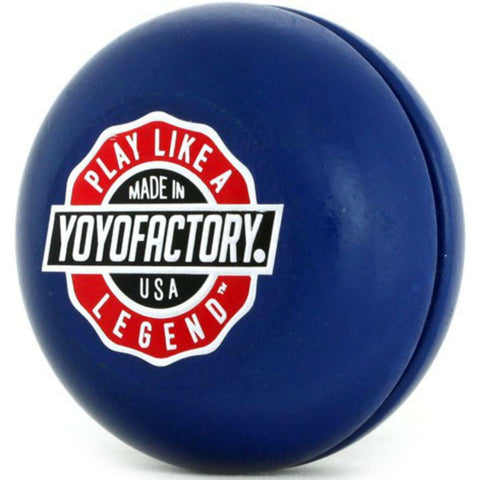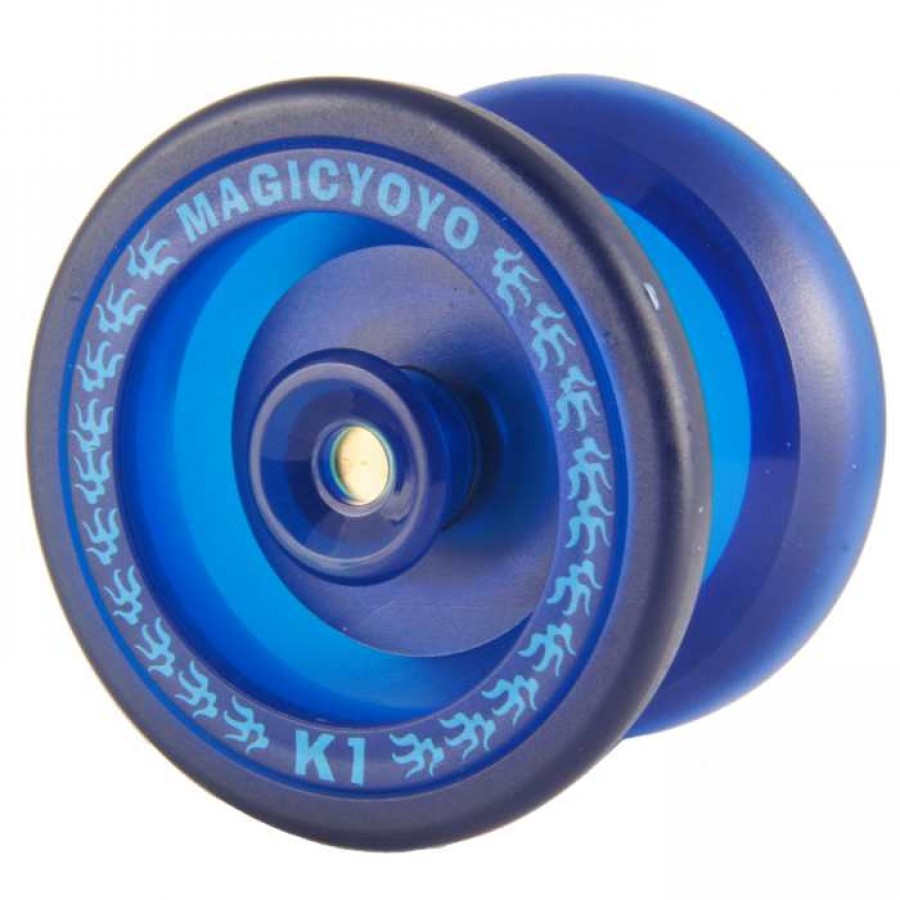Jojo materials explained
Although the yo-yo is a nostalgic toy for many people, the yo-yo has become very popular again in recent years. The question is therefore what yo-yos are made of, whether the materials used have been processed sustainably and whether they are safe. To clarify this, we explain everything about the yo-yo materials of today in this article.
Jojo material types
Yo-yos are nothing new. The history of the yo-yo probably goes back to 1000 BC. At that time, yo-yos were probably made from terracotta discs. We know that the yo-yo has been used for so long because on a vase from ancient Asia there is a painting of two people playing with a diabolo or yo-yo. In the meantime, yo-yos are no longer made of terracotta and the design has also changed considerably to increase the fun. Basically there are three materials that are commonly used to make yo-yos:
- Wood
- Plastic
- Metal
Although the very first yo-yos were made of a stone-like material, wooden yo-yos, or bandalores , became popular among French noble families in the 18th century.
Wooden yo-yos

Wood is the yo-yo material used by the French in the 18th century. This material has remained very popular ever since, because it is a nice material to hold. In addition, wood provides a timeless look that is recognizable for everyone. Finally, wood is a sustainable material that can last a lifetime.
If you do tricks with a wooden yo-yo, you will notice that the yo-yo is a bit heavier and less responsive than, for example, a plastic yo-yo. Due to the weight, it is not only challenging to practice different tricks, but you also train your hand and arm muscles at the same time!
Wooden yo-yos are not as popular nowadays since the advent of the modern yo-yo.
Click here to view our collection of wooden yo-yos .
Plastic yo-yos

At present, most yo-yos are made of plastic or plastic. This is mainly because these materials are cheap, very strong and easy to shape. For making yo-yos, the use of plastic or plastic is therefore the most obvious.
If you are a novice yo-yo player or if you are buying a yo-yo for a child, it is best to opt for plastic or plastic. Jojos made of this material do not break easily if they fall on the floor. This makes a plastic yo-yo the perfect choice for anyone just discovering the yo-yo.
Advantages of a plastic yo-yo:
- Cheaper than a metal yo-yo
- Same weight class as a metal yo-yo
- Damage here and there isn't that bad
Disadvantages of a plastic yo-yo:
- Playing too fast can cause you to lose control of the yo-yo. This is due to the hollow inside of the yo-yo.
- The yo-yo is often slippery, this does not work well for yo-yo'ers with clammy hands
Click here to view our collection of plastic yo-yos .
Metal yo-yos

If you find a metal yo-yo, this yo-yo is usually made of aluminum. A metal yo-yo is also called a mono-metal yo-yo (one type of metal). These yo-yos are considerably more expensive than wooden or plastic yo-yos. This is not only due to the higher cost of the material, but also due to the higher cost of getting them into a yo-yo shape. Depending on the design of the yo-yo, metal yo-yos are often a bit heavier than you are used to. With the correct yo-yo throw, this ensures a longer turning time.
Most metal yo-yos are made of aluminum. There are also yo-yos made of steel and titanium, but these are a lot more expensive.
Because metal yo-yos are heavier, they are less suitable for small children. The shiny material that the yo-yo is made of can be very beautiful. This generally leads to surprising reactions.
Advantages of a metal yo-yo:
- A more optimal weight distribution
- A metal yo-yo looks classier and can be nicely anodized
- The yo-yo is stronger than the plastic one (but it can really break on a hard ground!)
- Metal yo-yos hold more value for the used market
Disadvantages of a metal yo-yo:
- They are more expensive
- Drops and bumps can break the anodising layer and give it sharp edges
- If the yo-yo player loses control of the yo-yo, the yo-yo can hit your face (and that can hurt! A metal yo-yo can also get sharp edges from damage)
We do not recommend that beginners start immediately with metal yo-yos. You will often drop or bump the yo-yo and this will damage the yo-yo. In addition to being an expensive joke, the balance of the yo-yo can also be disrupted.
Click here to view our collection of metal yo-yos .

Bi-metal yo-yos

The bi-metal yo-yo is a yo-yo that consists of two types of material. Usually aluminum and stainless steel. Stainless steel is heavier than aluminum and is therefore placed at the ends of the yo-yo. These stainless steel rings ensure that the weight is concentrated on the edges of the yo-yo, making the yo-yo feel extremely stable. These yo-yo types are used to sometimes get more stability and sometimes more power. But often the same weight distribution can be achieved with a monometallic yo-yo.
Click here to view our collection of bi-metal yo-yos .
Hybrid yo-yos

Like a bi-metal, a hybrid yo-yo consists of two types of material. The center is made of plastic and the outer rings are made of metal. The goal is to get a very light body while keeping weight on the edges of the yo-yo for longer spin times and stability. This is usually done with Aluminum or Stainless Steel, depending on the manufacturer and model. The plastic part can also be clear, for a unique looking yo-yo.
In summary, you can see that each yo-yo type has its own advantages and disadvantages. Nowadays there are not many 'bad' yo-yos to be found, but it pays to keep yourself well informed. Most yo-yo players have multiple types of yo-yos to determine for themselves which yo-yo is preferred for each style of play.
Which yo-yo type do you prefer?


